Pinched Nerve Treatment: Common Symptoms & Methods Of Treatment
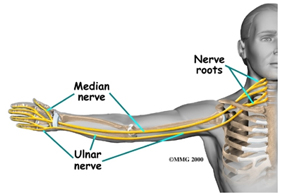 Before getting into pinched nerve treatment methods, let’s get some basics. A nerve is similar to an electric cord that carries electrical impulses. Nerves transmit information to and from the brain. The nerves in the neck communicate between the brain and arms.
Before getting into pinched nerve treatment methods, let’s get some basics. A nerve is similar to an electric cord that carries electrical impulses. Nerves transmit information to and from the brain. The nerves in the neck communicate between the brain and arms.
These electric cords run from the brain, down the spinal canal and exit out the cervical vertebra or neck bones and go to the arms, including muscles and skin. A “pinched nerve” describes an area of the nerve where there is pressure. When there is enough pressure, symptoms can arise that can cause pain and disturbed function.
Causes
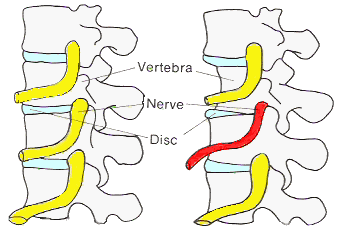 Pinching of the nerve is caused from pressure or compression. This term does not indicate how it is being pinched. There are many causes and it is often associated with degenerative changes in the disc and arthritis of the joints.
Pinching of the nerve is caused from pressure or compression. This term does not indicate how it is being pinched. There are many causes and it is often associated with degenerative changes in the disc and arthritis of the joints.
This can lead to bone spurs which form on the bones and can pinch a nerve. Sometimes this is only felt when moving in certain directions. A nerve can also be pinched from a disc herniation. A herniated disc, sometimes called a “slipped disc“, can result in the disc bulging or protruding into the nerve. So, pinching of the nerve is often caused by a narrowing of the space that the nerve goes through, squeezing the nerve causing compression or pressure on the nerve, which causes symptoms.
Symptoms
Symptoms of a pinched nerve in the neck can cause more than just neck pain. Remember, the nerves go through the neck into the arms, therefore, symptoms may be felt in the neck, shoulders, arms, and even into the hand and fingers. Symptoms of a pinched nerve are often referred to as radiculopathy by medical professionals.
Symptoms may include neck pain and stiffness. This pain can be sharp. The pain may also be dull or achy, and this is often experienced as neck and shoulder pain. Pain into the shoulder or between the shoulders can be a result of the pinched nerve causing pain to radiate into these areas.
Because the nerve is being pinched, pain may be felt in areas distant from the neck, like the arm or hand. The nerve pinching may cause symptoms like numbness or tingling. This may be felt as pins and needles going into the fingers and may cause symptoms described as the arm or hand “falling asleep”. It is often possible to tell which nerve is affected by the area or areas that the symptoms are found, since each nerve has a particular location that it goes through. This can be the area of pain, numbness or even muscle weakness. Often, it is not clear and diagnosis by a health care professional is necessary to determine the cause, or if there is another reason for the symptoms, such as vascular problems or possible tumor.
How Is A Pinched Nerve In Neck Diagnosed?
A health care professional will need to take a health history and details about the symptoms. It is important to know things like accident, family and health history. A referral to a specialist may be necessary as special orthopedic tests and imaging studies like x-rays or MRI exams may be needed to correlate the findings in order to make a diagnosis. This will determine pinched nerve treatment methods recommended to alleviate the symptoms.
Pinched Nerve Treatment
You should beware of individuals making claims of a cure. There are no easy or guaranteed fixes. In general, pinched nerve treatment is according to the severity of symptoms, if it is recent or has been going on for some time, and the findings indicated by any imaging studies.
Initially, rest is indicated along with any medications to alleviate pain and inflammation. Sometimes, this is all that is needed to treat the pinched nerve. Ice on the neck may be used if it is recent or traumatic, or heat therapy may be recommended with long term or chronic symptoms. Orthopedic pillows makes good common sense to reduce pain while resting and sleeping.
Supports
Often, part of pinched nerve treatment is using cervical support braces, which may be used to help restrict harmful motions and help support the muscles. There are many types of braces ranging from soft collars to more rigid braces. Your doctor will usually recommend which type of brace you need, however, a general collar that is not too restricting while providing some measure of support and comfort is reasonable to help in the initial stages of healing and reducing muscle spasm.
Medication
Over the counter medications that reduce pain and inflammation may be used, however, your doctor may prescribe stronger medications to more rapidly reduce inflammation depending on your health history. This can help alleviate the pain. Some doctors may prescribe muscle relaxers or medications that specifically reduce spasm and nerve pain. It is important to follow the directions for taking any medications and ask any questions regarding side effects. Your doctor and pharmacist are the best sources to answer your questions about pain medications for pinched nerve treatment.
Exercise
Your doctor may prescribe physical therapy. In general, exercises are the main method of treatment. Exercises to reduce pain can be effective and a physical therapist can be an expert in this type of care. In some instance, exercises can be done at home. For pinched nerve treatment, it is important to use motions that reduce pain or cause the symptoms to move from the hand to the arm, or from the arm to the neck. This process is called centralization. It emphasizes the point that any movements which cause the pain to become worse or radiate to distant areas should be avoided. Likewise, those motions that reduce pain or cause it to move towards the center are to be done within reason.
For example; a pinched nerve usually is one sided – left or right. If you have a it on the right side and perhaps tingling down to the fingers, usually, turning and/or bending the head to the right may cause more pain. Therefore, this motion should be avoided. Bending the head to the left may cause the pain to lessen or cause the tingling to lessen. The motion of turning or bending to the left can be done as a stretch or exercise. Raising the affected side arm and placing the hand on your head may alleviate the symptoms and this could be done alone, or in combination with the motion that reduces symptoms.
So, exercises and/or stretching as a piched nerve treatment must be done specifically and with caution. This should be done after any inflammation is managed. Once the specific exercises are able to stabilize the condition, more general exercising can be done to help strengthen the neck and prevent future problems.
Neck Traction
When compression is present, traction is often used as a decompression therapy to remove pressure on the nerve. Traction is one of the best pinched nerve treatment options and can be done in an office setting or can be done at home with the use of specially designed traction devices. Traction can be used while lying down or, with collar type device, while sitting. Traction should not be used when there is active inflammation. When using at home, it may be prescribed using certain details, or it can be used to tolerance with care not to increase any pain. This, like heat and ice, is intended to produce a certain physiological response – too much can produce negative effects.
Massage Therapy
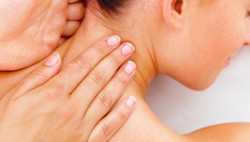 Massage can be helpful in reducing muscle spasm and pain. In general, light, therapeutic massage should be used. This can be very relaxing, however, care must be taken not to remain in one position for too long. Massage should not be forceful. While deep tissue massage has its place, and may even feel good, during the early stages of a pinched nerve, light massage is all that is needed. Later, during the healing process, deep muscle massage or trigger point therapy can be used to help the muscles and address any chronic pain issues.
Massage can be helpful in reducing muscle spasm and pain. In general, light, therapeutic massage should be used. This can be very relaxing, however, care must be taken not to remain in one position for too long. Massage should not be forceful. While deep tissue massage has its place, and may even feel good, during the early stages of a pinched nerve, light massage is all that is needed. Later, during the healing process, deep muscle massage or trigger point therapy can be used to help the muscles and address any chronic pain issues.
Chiropractic Care
A chiropractor may help with pinched nerve treatment, depending on the findings. A chiropractor will do an examination and determine if it is amenable to treatment. Typically, this treatment involves adjustments in the direction that alleviates the pain. This is similar to the direction preference noted above for exercise and stretching. Another approach used by chiropractors is a combination of adjusting with traction by means of a special adjusting table. This is a low force treatment, like Cox Chiropractic Technique, that can be quite effective. Some chiropractors will use additional therapies to alleviate pain and inflammation, like hot/cold treatments, electrical stimulation, cold laser, exercise and other methods.
Spinal Injections
When the use of conservative therapies do not produce results in a reasonable period of time, say about 3 months, additional treatments may be considered. Options are typically more invasive and injections may be offered. Spinal injections consist of injecting anti-inflammatory and/or pain relieving medications into areas of the spine that may respond to a concentrated and direct application of the medications.
Surgery
When conservative treatments and injections fail to provide relief or resolution of the condition, surgery may be an option. This is usually a last resort, unless there are specific indications for surgery from the beginning. Surgical methods vary depending on the condition and the surgeon. Surgical success is increased when selection of the patient with the appropriate criteria are met. Things like health status along with positive attitudes effect outcomes.
Recovery
Since everyone is different and will respond differently to pinched nerve treatment, there is no set time for recovery from a pinched nerve. Some cases can be managed in a matter of weeks, with fairly rapid relief from response to medications like oral steroids, which can rapidly reduce inflammation. Some cases of pinched nerves will go through a period of conservative therapies and wind up needing surgery. Depending on the condition, this may take a year or so. Generally, the better your health and condition of your spine, the better you will recover from a pinched nerve in the neck.

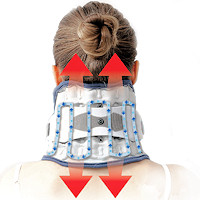 Neck Traction Devices
Neck Traction Devices Cervical Pillows
Cervical Pillows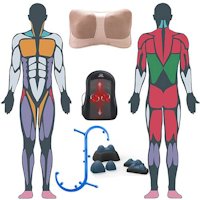 Muscle Therapy Tools
Muscle Therapy Tools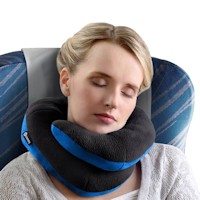 Special Pillows
Special Pillows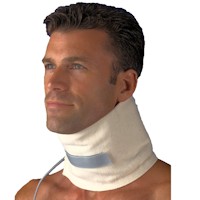 Heat Therapy
Heat Therapy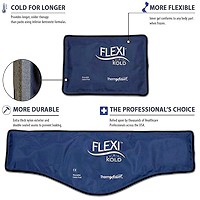 Cold Therapy
Cold Therapy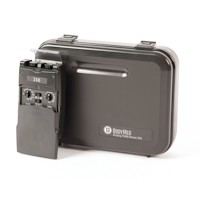 TENS Therapy
TENS Therapy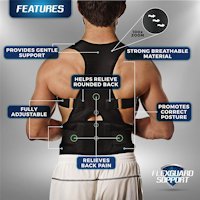 Posture Braces
Posture Braces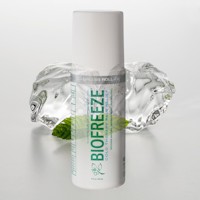 Topical Pain Relievers
Topical Pain Relievers